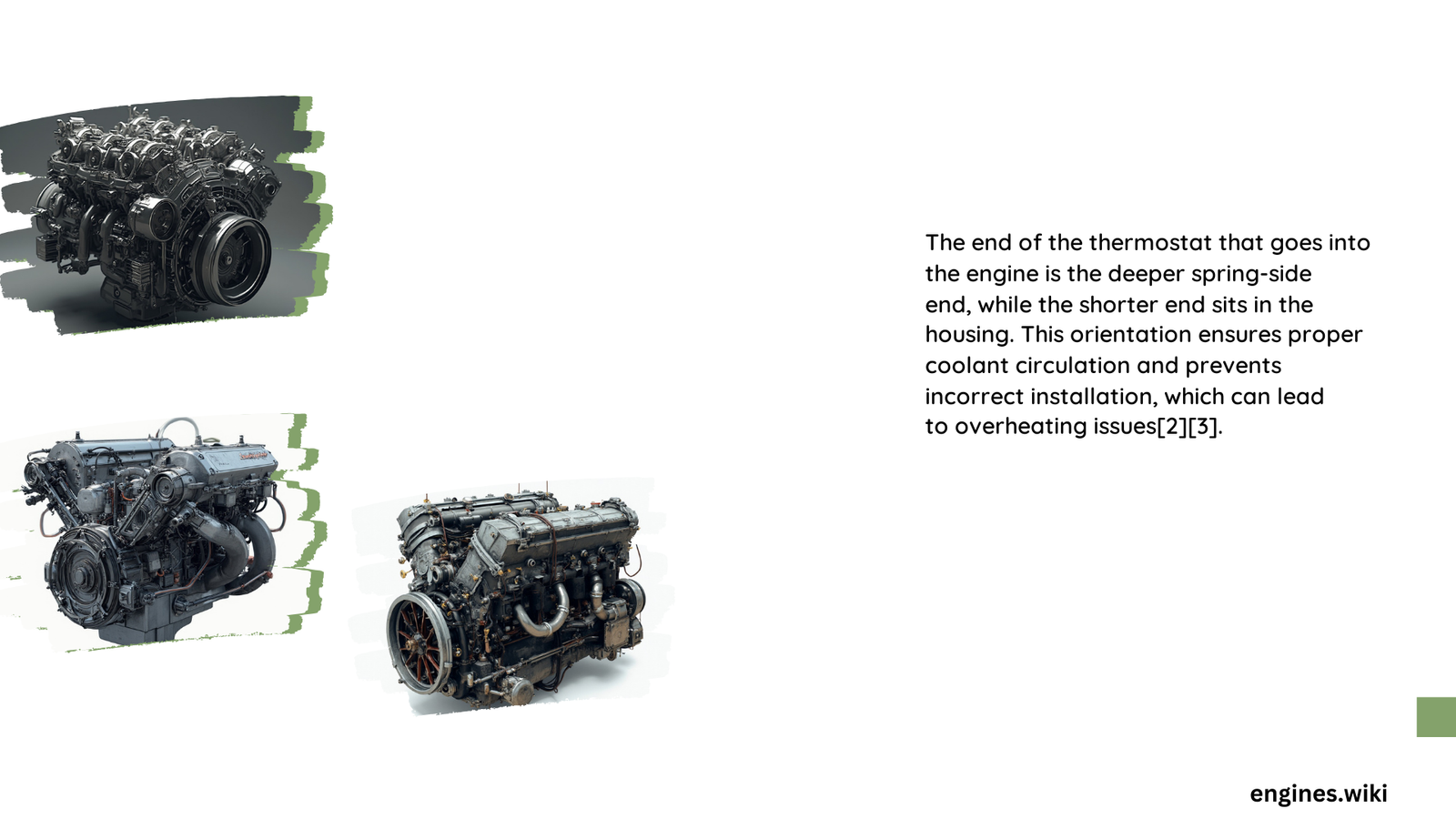When installing a vehicle thermostat, understanding the correct orientation is crucial for optimal engine cooling performance. The deeper, spring-loaded end of the thermostat must face the engine, while the shorter, pointed end connects to the radiator hose. This precise placement ensures proper coolant circulation and temperature regulation, preventing potential overheating and mechanical complications in your vehicle’s cooling system.
What Makes Thermostat Orientation Critical?
Vehicle thermostats play a pivotal role in maintaining engine temperature. Incorrect installation can lead to significant mechanical issues, including:
- Inefficient coolant circulation
- Potential engine overheating
- Reduced cooling system performance
- Premature component wear
How Do You Identify the Correct Thermostat End?
Visual Identification Methods
| Thermostat Feature | Engine-Side End | Radiator-Side End |
|---|---|---|
| Spring Presence | Contains spring | No spring |
| Depth | Deeper/Cylindrical | Shorter/Pointed |
| Typical Marking | “TO ENGINE” | “TO RAD” |
Key Installation Techniques
- Examine Thermostat Geometry
- Locate the deeper, more substantial end
- Identify spring-loaded section
-
Ensure spring faces engine block
-
Verify Manufacturer Specifications
- Consult vehicle-specific manual
- Check for unique design variations
- Confirm recommended orientation
What Happens with Incorrect Thermostat Placement?
Improper thermostat installation can trigger multiple mechanical complications:
- Temperature Regulation Failure
- Engine may not reach optimal operating temperature
- Potential increased fuel consumption
-
Reduced overall engine efficiency
-
Coolant Flow Disruption
- Inconsistent cooling system performance
- Risk of localized overheating
- Potential gasket and seal damage
Practical Installation Recommendations

Preparation Steps
- Clean thermostat housing thoroughly
- Inspect mounting surface for debris
- Use appropriate gasket or sealant
- Ensure proper alignment with housing slots
Tools Required
- Socket wrench set
- Torque wrench
- Gasket scraper
- New thermostat
- Replacement gasket
Common Troubleshooting Tips
- Always compare new thermostat with old unit
- Check for manufacturer-specific installation guidelines
- Verify spring tension and condition
- Confirm correct temperature rating for your vehicle
Professional Insights
Experienced mechanics emphasize three critical aspects of thermostat installation:
- Precise orientation matters more than generic assumptions
- Each vehicle model might have slight variations
- Regular maintenance prevents costly cooling system failures
Recommended Torque Specifications
Most vehicle manufacturers recommend:
– Thermostat housing bolts: 10-15 ft-lbs
– Consistent, cross-pattern tightening
– Avoid over-tightening to prevent housing damage
Final Verification Checklist
- ✓ Deeper end faces engine
- ✓ Spring side towards engine block
- ✓ Shorter end connects to radiator hose
- ✓ Proper gasket alignment
- ✓ No visible gaps or misalignments
Potential Consequences of Incorrect Installation
| Misalignment Type | Potential Outcome | Repair Complexity |
|---|---|---|
| Backwards Installation | Complete Cooling Failure | High |
| Partial Misalignment | Inconsistent Temperature | Medium |
| Loose Fitting | Coolant Leakage | Low-Medium |
Expert Recommendation
Always prioritize precision over speed during thermostat replacement. When in doubt, consult a professional mechanic or refer to your specific vehicle’s service manual.
Reference:
– SAE International Cooling System Guidelines
– Automotive Maintenance Technical Resources
– Professional Mechanic Forums
